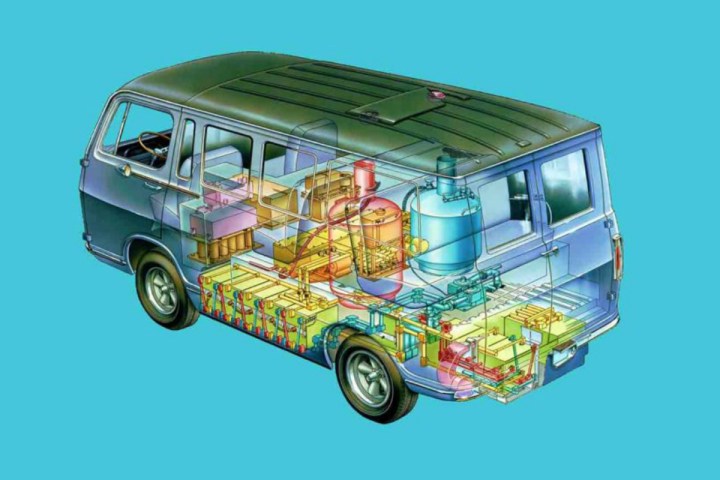
In October 1966, the month and year Neal Diamond had his first U.S. top-10 single, Cherry, Cherry, President Lyndon B. Johnson signed a bill creating the U.S. Department of Transportation, and the Jimi Hendrix Experience was formed, GM introduced the Electrovan. An electric vehicle powered by a hydrogen fuel cell, the Electrovan had room for two people, weighed 7,100 pounds, and lumbered from zero to 60 in 30 seconds. But it ran and its only emission was water — if you don’t count the process of producing the hydrogen fuel stored in an onboard tank.
The Electrovan was never a serious product. It was a technology demonstration. A team of about 200 people worked from January to October that year, working three shifts, building a vehicle for the future. Remember, this was almost three years before Neil Armstrong placed the first human foot on the moon. The future was in science, in chemistry, and in technology.
The work on hydrogen fuel cells continues. GM is in talks with Honda about joining forces in fuel cell production. GM and the United States Army have announced a prototype hydrogen fuel cell vehicle based on the Chevrolet Colorado truck. Honda, Hyundai, Volkswagon, Toyota, and others are developing fuel cell vehicles.
As Wired points out, however, there are two major obstacles to advancing fuel cell vehicles. “There’s no real infrastructure to get the fuel around the country and into cars. And while hydrogen’s the most abundant element in the universe, making it into a useable fuel often involves natural gas — hardly a zero-emissions process.”
So fuel cell technology development goes on, but the excitement around electric vehicles is much greater. Large automotive companies with medium-sized-country level budgets may be able to pursue multiple technologies at the same time, but the public usually is able to get its collective mind around only one new technology at a time. For now, at least, fuel cells are in a distant second place.
Editors' Recommendations
- How do electric cars work? EV motors and batteries explained
- General Motors makes its first delivery to hospitals battling coronavirus
- General Motors highlights a socially distant, germ-free way of buying a car
- Hyundai’s hydrogen fuel cell truck makes hauling freight green and glamorous
- Hyundai cracks off two new land speed records in fuel cell, hybrid cars




